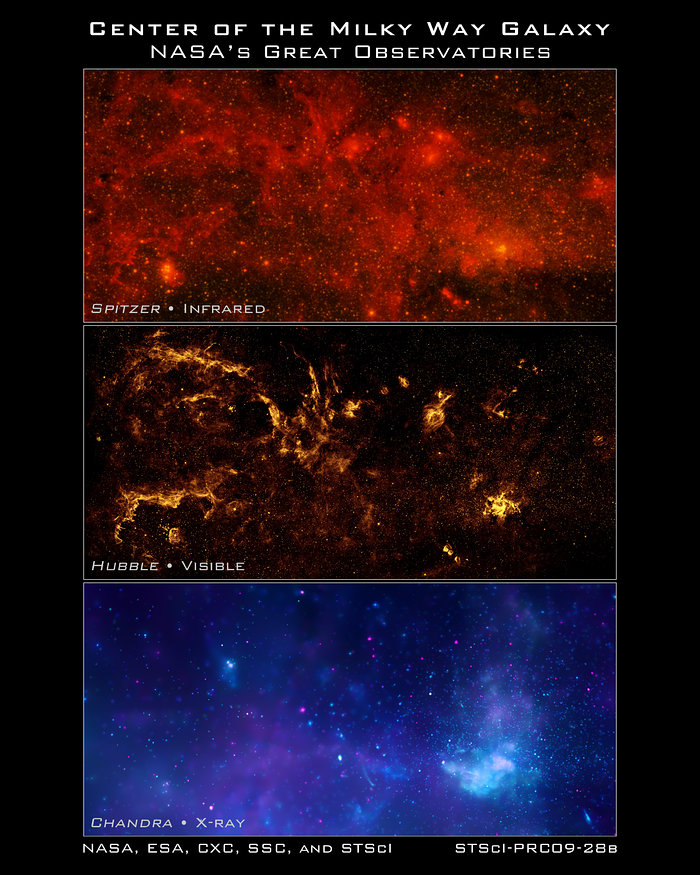Hubble and other Great Observatories present unique views of the centre of the Milky Way
In celebration of the International Year of Astronomy 2009, NASA's Great Observatories – the Hubble Space Telescope, the Spitzer Space Telescope, and the Chandra X-ray Observatory – have produced a matched trio of images of the central region of our Milky Way galaxy. Each image shows the telescope’s different wavelength view of the galactic centre region, illustrating the unique science each observatory conducts.
[Top Frame] – Spitzer's infrared-light observations provide a detailed and spectacular view of the galactic centre region. The swirling core of our galaxy harbours hundreds of thousands of stars that cannot be seen in visible light. These stars heat the nearby gas and dust. These dusty clouds glow in infrared light and reveal their often dramatic shapes. Some of these clouds harbour stellar nurseries that are forming new generations of stars. Like the downtown of a large city, the centre of our galaxy is a crowded, active and vibrant place.
[Middle Frame] – Although best known for its visible-light images, Hubble also observes over a limited range of infrared light. The galactic centre is marked by the bright patch in the lower right. Along the left side are large arcs of warm gas that have been heated by clusters of bright massive stars. In addition, Hubble uncovered many more massive stars across the region. Winds and radiation from these stars create the complex structures seen in the gas throughout the image. This sweeping panorama is one of the sharpest infrared pictures ever made of the galactic centre region.
[Bottom Frame] – X-rays detected by Chandra expose a wealth of exotic objects and high-energy features. In this image, pink represents lower energy X-rays and blue indicates higher energy. Hundreds of small dots show emission from material around black holes and other dense stellar objects. A supermassive black hole – some four million times more massive than the Sun – resides within the bright region in the lower right. The diffuse X-ray light comes from gas heated to millions of degrees by outflows from the supermassive black hole, winds from giant stars, and stellar explosions. This central region is the most energetic place in our galaxy.
Credit:NASA, ESA, SSC, CXC and STScI
About the Image
About the Object
| Name: | Milky Way Center, Sagittarius |
|---|---|
| Type: | Milky Way : Galaxy : Component : Center/Core |
| Distance: | 25000 light years |
| Category: | Galaxies |
Colours & filters
| Band | Telescope |
|---|---|
| X-ray |
Chandra
ACIS |
| Optical |
Hubble Space Telescope
NICMOS |
| Infrared | Spitzer Space Telescope IRAC |
